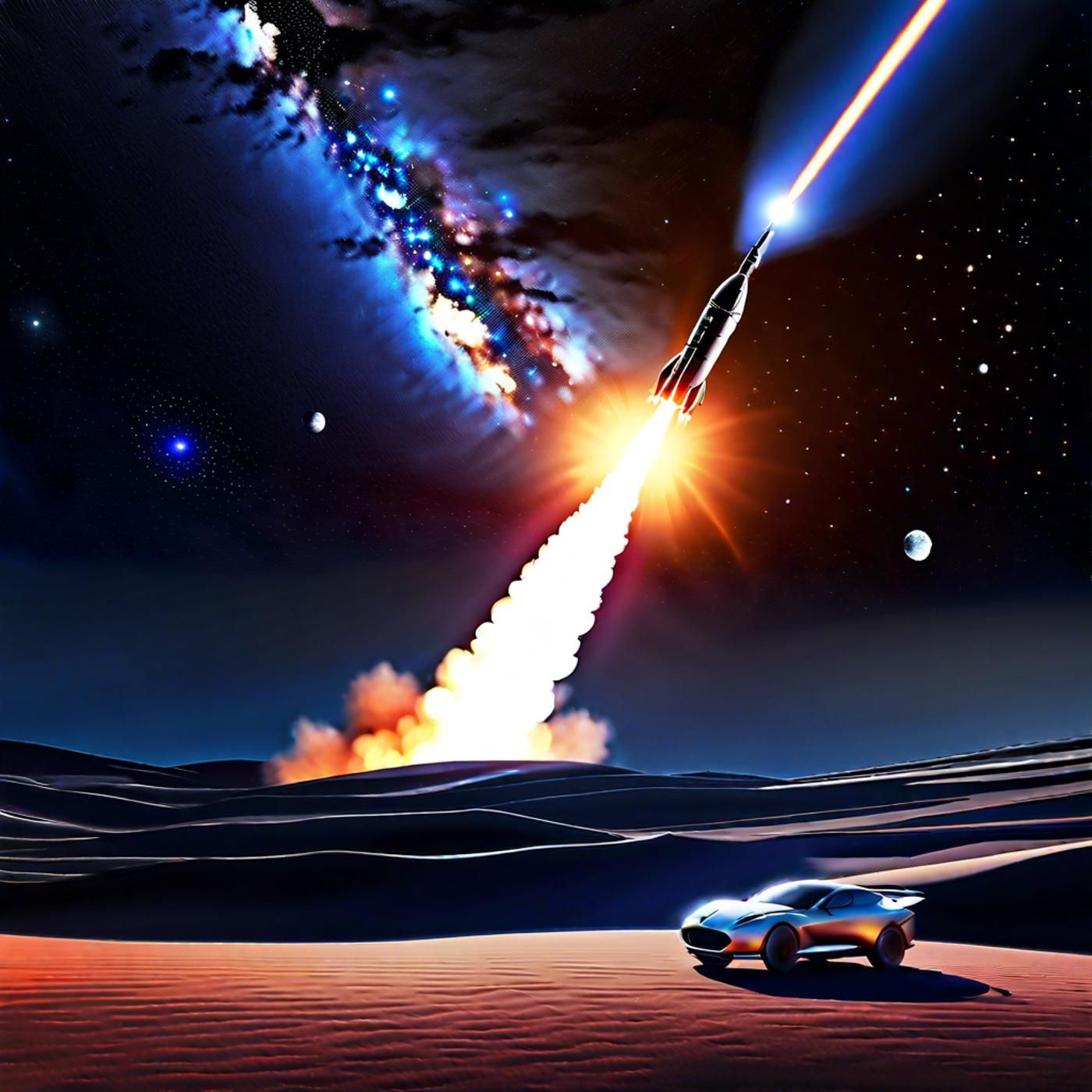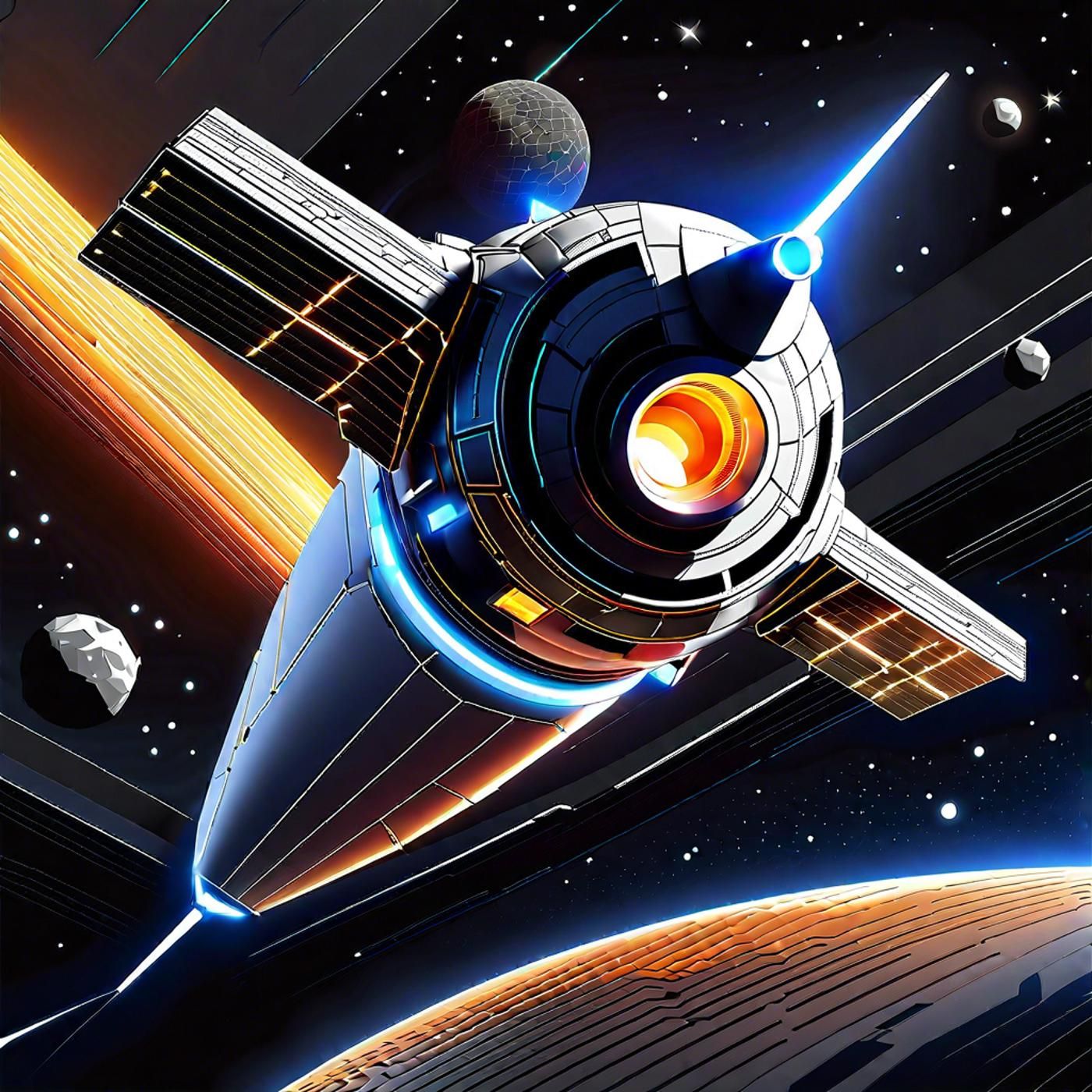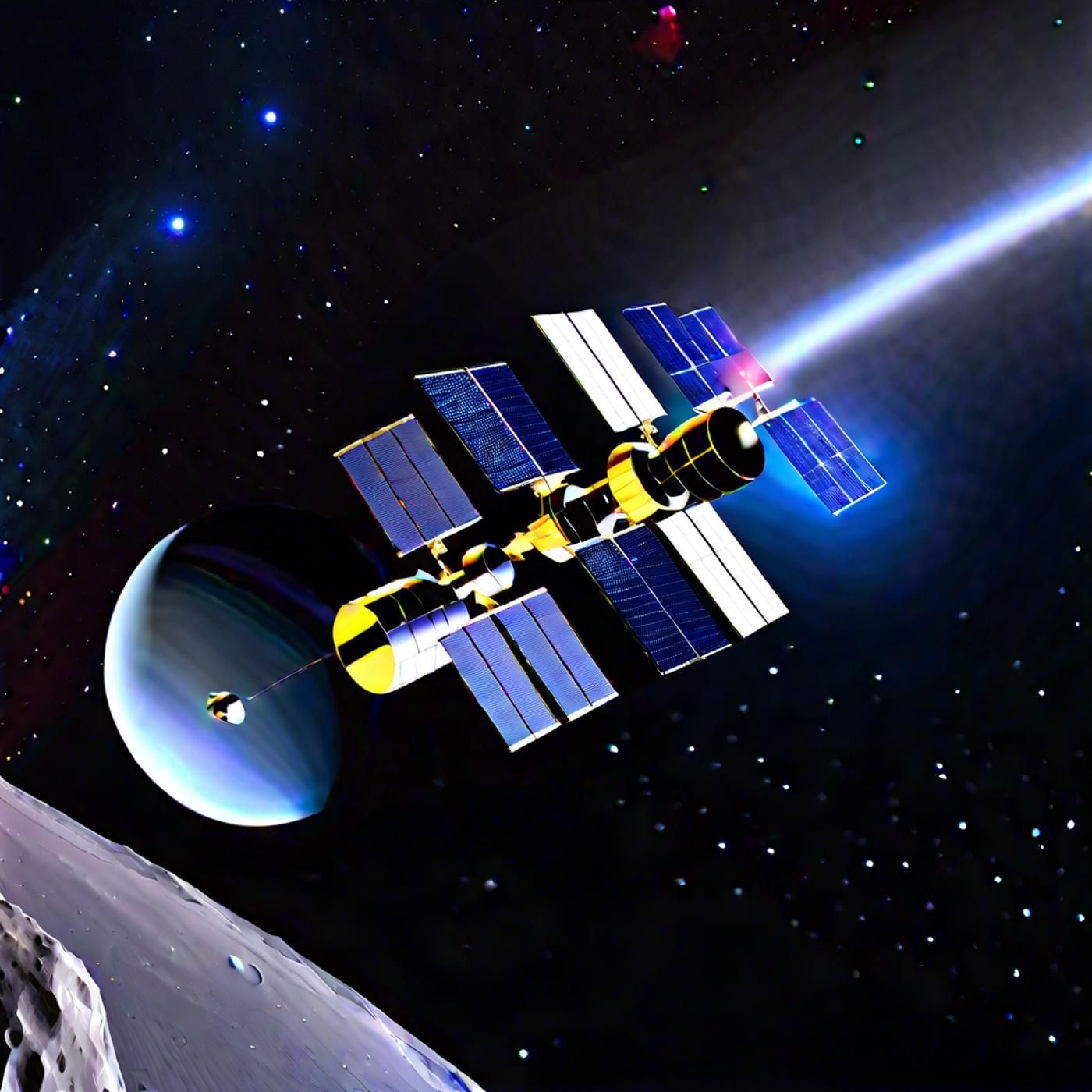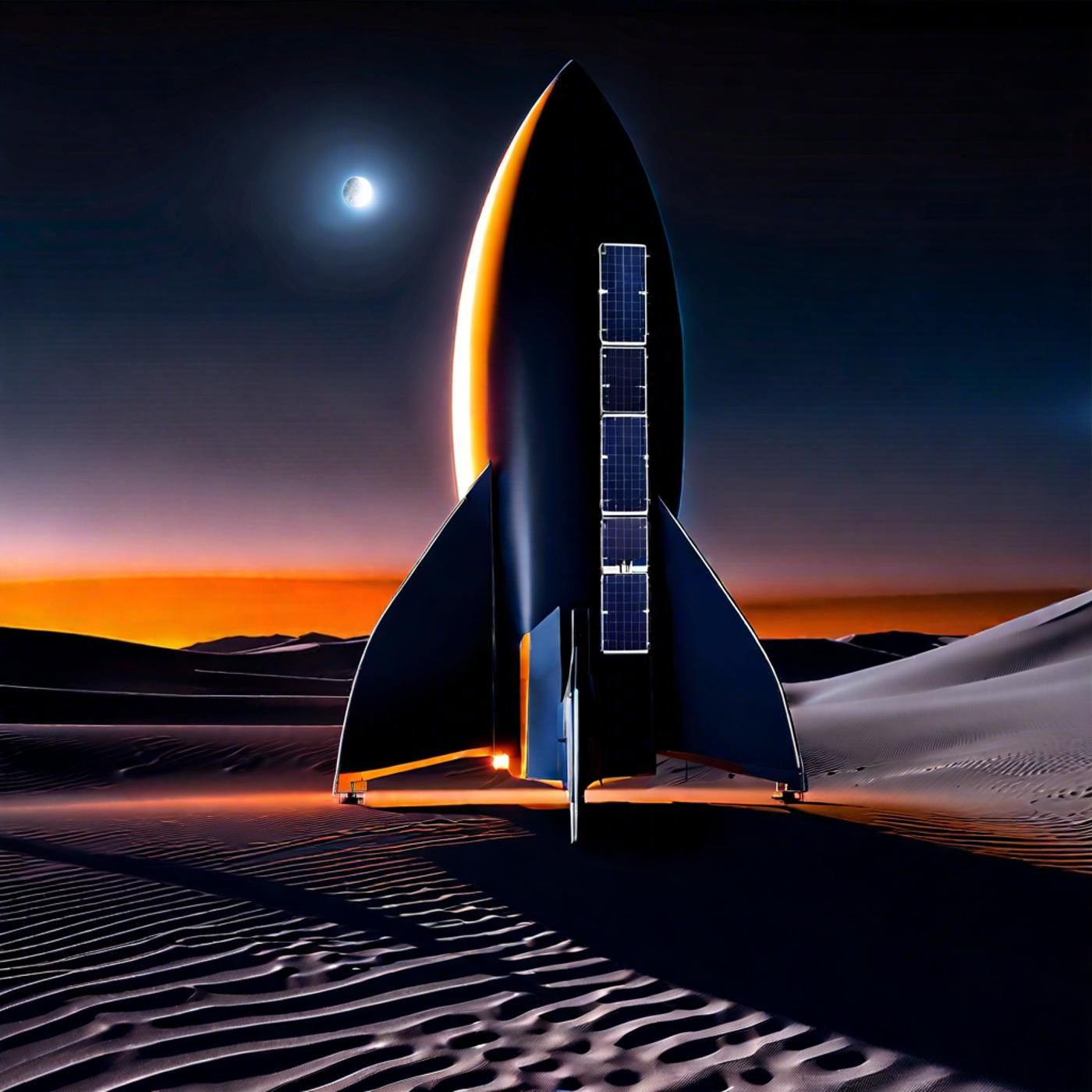S03E61: Earthcare's Liftoff & Vulcan's Vanishing Act: ESA's Mission and Star Trek's Planetary Myth

Embark on a celestial journey with today's episode of Astronomy Daily - The Podcast, where your host, Anna, guides you through the latest cosmic updates. We'll kick off with the successful launch of ESA's Earthcare mission aboard a Falcon 9 rocket,...
Embark on a celestial journey with today's episode of Astronomy Daily - The Podcast, where your host, Anna, guides you through the latest cosmic updates. We'll kick off with the successful launch of ESA's Earthcare mission aboard a Falcon 9 rocket, followed by the reentry of Russia's Progress 86 cargo spacecraft. Next, we'll delve into the debunking of a planet thought to exist in the Star Trek universe, explore whether the Milky Way orbits anything, discuss NASA's OSIRIS Apex mission as it bravely passed close to the sun, and look at the recent test success of the Vega C rocket's engine as it nears a return to flight.
00:00) This week's Astronomy Daily features stories ranging from rocket launches to cosmic discoveries
00:49) The Earth Care mission, led by the European Space Agency ESA, successfully launched
03:40) New precision measurements have debunked the long believed existence of a planet orbiting 40 Eredani
06:25) NASA's OSiRIS Apex spacecraft emerges unscathed from solar encounter
07:40) ESA's successful Vega-C's rocket engine test
For an astronomical experience, visit our website at astronomydaily.io for the latest news, sign up for our free newsletter, and check out exclusive sponsor deals. Connect with us on X (@AstroDailyPod) for engaging discussions with fellow space aficionados.
This is Anna, reminding you to keep your gaze fixed on the heavens. Until our next stellar episode, let the cosmos ignite your curiosity and wonder. Clear skies and cosmic discoveries to all!
Become a supporter of this podcast: https://www.spreaker.com/podcast/astronomy-daily-the-podcast--5648921/support.
www.astronomydaily.io
www.bitesz.com
Sponsors
www.bitesz.com/nordpass
https://www.bitesz.com/show/astronomy-daily-the-podcast/sponsors/
Today's Astronomy Daily features stories ranging from rocket launches to cosmic discoveries
Anna: Welcome to another episode of Astronomy Daily, your go to source for all the latest in space and astronomy news. I'm your host, Anna, and today we have a thrilling lineup of stories ranging from rocket launches to cosmic discoveries. In today's episode, we'll be covering the successful launch of ESA's Earth care mission aboard a falcon nine rocket, the reentry of Russia's progress 86 cargo spacecraft, and a fascinating update on a planet thought to exist in the Star Trek universe. Well, also explore whether the Milky Way orbits anything, discuss NASA's OSIrIs apex mission as it bravely passed close to the sun, and look at the recent test success of the Vega C rockets engine as it nears a return to flight. So buckle up and get ready for an exciting journey through the cosmos.
The Earth Care mission, led by the European Space Agency ESA, successfully launched
The Astronomy daily podcast the Earth Care mission, led by the European Space Agency ESA and the Japanese Aerospace exploration agency JAXA, successfully launched atop a Falcon nine rocket from Vandenberg Space Force base. The launch took place on May 28, marking another milestone in ESA's ongoing, if temporary, reliance on SpaceX for space access. The mission, officially named the Earth Cloud, aerosol and Radiation explorer Earthcare, is designed to study clouds and aerosols in the Earth's atmosphere. Earthcare aims to provide vital data that will enhance atmospheric science, particularly in the realms of climate modeling and weather prediction. The spacecraft carries a suite of instruments, including a cloud profiling radar provided by JAXA, that will measure reflected sunlight and radiated heat across different atmospheric layers. This data is crucial for understanding the thermal balance of the Earth and the roles that clouds and aerosols play in it. The 2200 kilogram spacecraft is now in a sun synchronous orbit at an altitude of 393 km, where it will collect and analyze atmospheric data. This collaborative mission exemplifies the international effort and scientific dedication aimed at addressing some of the most complex environmental challenges facing our planet today as ESA waits for the Ariane six to become operational. Currently scheduled for its first launch in July, the Falcon nine serves as a reliable interim solution for getting critical missions like Earth care into space. The uncrewed Russian Progress 86 spacecraft has completed its latest mission by undocking from the International Space Station and re entering Earth's atmosphere, where it burned up over the Pacific Ocean. As planned. Progress 86, launched atop a russian Soyuz rocket from the Baikonur Cosmodrome in Kazakhstan on December 1, 2023, played a crucial role in delivering 5600 pounds of food, scientific hardware, and other necessary supplies to the astronauts aboard the ISS. Serving a dual purpose, the spacecraft also acted as a garbage truck in its final hours, hauling down trash from the orbiting lab for safe incineration in Earth's atmosphere. This approach to space waste management ensures that the orbiting environment around our planet remains free of debris. Although Progress 80 six's mission has come to a fiery end, the space station remains well supplied with four other operational spacecraft, including SpaceX's crew, eight dragon capsule, a russian Soyuz crew spacecraft, the Progress 87 freighter, and a Northrop Grumman Cygnus cargo vehicle. This ongoing cycle of supply missions highlights the complex and continuous logistics that keep the ISS operational and its astronauts supported.
New precision measurements have debunked the long believed existence of a planet orbiting 40 Eredani
New precision measurements have debunked the long believed existence of a planet orbiting the star 40 Eredani, a famously known as Vulcan, the home planet of Mister Spock in the star Trek universe. This groundbreaking revelation comes from a recent study that clarified the possible detection as an astronomical illusion brought about by the natural pulses and jitters of the star itself. Initially thought to be a super Earth in a close 42 day orbit around 40 Eridani, a Vulcan's existence had ignited excitement when first announced in 2018. However, the new high precision data obtained from a sophisticated NASA NSF instrument at Kitt Peak National Observatory has shown that what appeared to be a planetary signal was in fact the result of stellar activity. This highlights an ongoing challenge in exoplanet detection, particularly when using the radial velocity method. Scientists found that the star's surface features, combined with internal motions, mimicked the signals they normally attribute to orbiting planets. While disappointing for star Trek aficionados, this finding underscores the importance of continued advancements in observational techniques, which will help astronomers distinguish more accurately between planets and stellar phenomena. Next, let's delve into a fascinating does the Milky Way orbit anything? It turns out that not everything in the universe follows the same straightforward orbital paths, like planets around stars. The Milky Way, our, uh, home galaxy, along with its neighbor Andromeda, actually orbits a common center of mass within a collection of galaxies known as the local group. Astronomers explain that because the masses of the Milky Way and Andromeda are comparable, the common center of mass lies between the two galaxies. This dynamic gravitational interaction means that both galaxies are mutually pulling towards each other, leading to an eventual cosmic collision. This collision, expected to happen in about 4.5 billion years, will cause the Milky Way and Andromeda to merge, forming a massive new elliptical galaxy. Moreover, the local group is not standing still. It's moving towards the Virgo cluster, a much larger conglomeration of several hundred galaxies. However, due to the ongoing expansion of the universe, our local group will never reach the Virgo cluster. This expansion is pulling galaxies apart faster than their mutual gravitational forces can draw them together. So while the Milky Way doesn't orbit a single larger object, it's engaged in a complex dance with Andromeda and other members of the local group, all while being swept along by the broader currents of the universe's expansion.
NASA's OSiRIS Apex spacecraft emerges unscathed from solar encounter
NASA's OSiRIS Apex spacecraft has emerged unscathed from its closest ever pass by the sun, putting any concerns to rest. Mission engineers had high hopes, and their confidence wasn't misplaced. The spacecraft, designed to withstand such harsh conditions, was positioned ingeniously to shield its sensitive components, proving its resilience and excellent engineering. During the perihelion on January 2, 2024, OSiriS Apex got within 25 million mile of the sun, much closer than initially intended for its design. This close encounter tested the spacecraft's limits, but also revealed some unexpected benefits. Sensors and instruments functioned better than anticipated after exposure to high temperatures, with one camera seeing a significant reduction in hot pixels thanks to a natural annealing process from the intense heat. Now fully operational, OSiriS Apex is on a path to rendezvous with asteroid Apophis, uh, in 2029. The mission includes navigating multiple close passes by the sun and leveraging three earth gravity assists to adjust its trajectory. While the spacecraft's stellar performance so far is encouraging, engineers remain vigilant about the cumulative effects of these intense perihelion passes. The Zafiro 40 solid rocket motor passed a critical test at Avio's facility in Italy, making significant progress towards the return to flight for the Vega Sea launcher. This test is crucial in confirming the motor's improved engine nozzle design, which is necessary for Vega C's operational return by the end of 2024. The Zafiro 40, a UH, 7.6 meters tall rocket motor loaded with over 36 tons of solid propellant, performed as expected throughout its 94 2nd burn duration. Vega C is the upgraded version of the original Vega rocket, which has been operating since 2012. Designed to take over from its predecessor, Vega Sea promises enhanced capabilities for european space missions the European Space Agency oversees the Vega Sea program, ensuring its qualification and purchasing launch services for european institutional missions. Avio is the prime contractor and design authority for Vega Sea, while Ariani space will provide the launch services. A uh, second firing test of the Zafiro 40 motor is scheduled for October 2024 to validate the data collected and ensure the rocket's readiness. With successful tests, Vega C will replace the older Vega model and bolster Europe's presence and capabilities in space exploration and satellite deployment.
This is the final episode of Astronomy Daily
Thats a wrap for todays episode of Astronomy Daily. Im Anna and thank you for joining us. We hope you enjoyed this fascinating journey through the latest space and astronomy news. As always, theres much more to explore, so be sure to visit our website at astronomydaily IO. There you can stay updated with the latest stories, listen to back episodes, and dive into exclusive content from our sponsors, including NordPass, NordVPN, Protonmail, and Amazon. Do you want to support our show and get more exclusive content? Head over to our become a member page on our website. Your support is invaluable and helps us continue bringing you the best in space news. Have a wonderful day and keep looking up at the stars.
New to Astronomy Daily - The Podcast?
Here are some great episodes to start with.




















